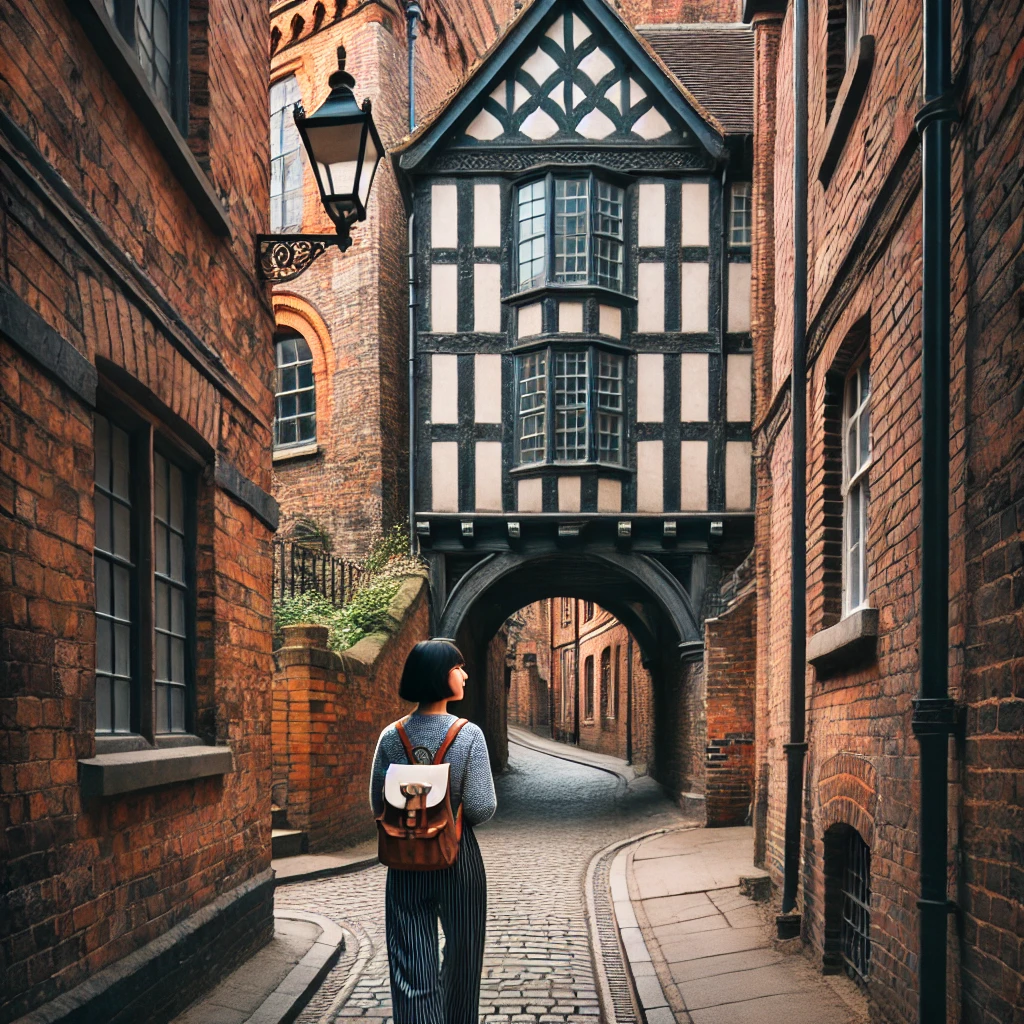ChatGPT:
Ludlow is a picturesque market town located in Shropshire, England, near the Welsh border. Known for its rich history, Ludlow is dominated by the imposing Ludlow Castle, a medieval fortress that dates back to the 11th century. The town is often celebrated for its well-preserved medieval architecture, with a mix of timber-framed buildings, narrow streets, and historic landmarks.
Ludlow is also renowned for its vibrant food scene. It hosts several food festivals throughout the year, including the popular Ludlow Food Festival, which showcases local produce and culinary talent. The town’s reputation as a gastronomic hub is supported by a variety of excellent restaurants, pubs, and markets.
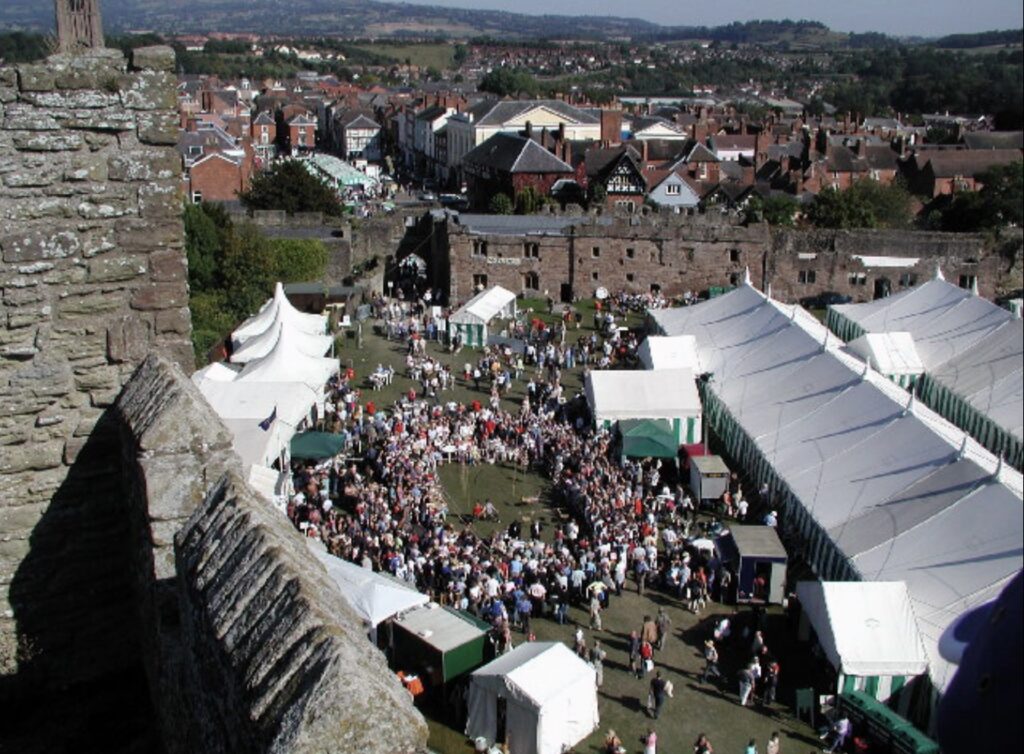
The surrounding countryside of Ludlow is part of the Shropshire Hills Area of Outstanding Natural Beauty, offering stunning landscapes and numerous walking trails. This makes Ludlow a popular destination for both history enthusiasts and nature lovers.
In addition to its history and food culture, Ludlow has a lively arts scene, with events such as the Ludlow Fringe Festival, bringing together a range of performances, exhibitions, and cultural activities. The town’s blend of history, culture, and natural beauty makes it a charming and attractive destination.
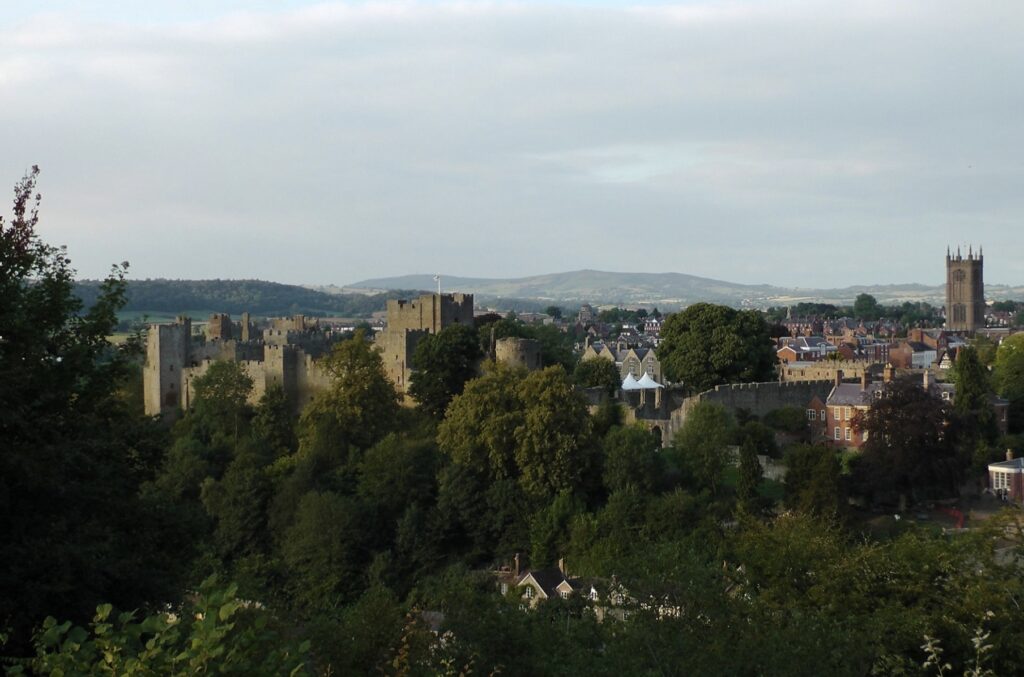
Ludlow Castle, located in the town of Ludlow, Shropshire, England, was originally established as a defensive stronghold during the Norman conquest of England. Its origins date back to the late 11th century, around 1075, when it was founded by the de Lacy family, a powerful Norman dynasty. The de Lacys were granted extensive lands in the Welsh Marches, a turbulent border region between England and Wales, and they constructed Ludlow Castle as part of their strategy to secure and control this territory.
The initial construction of Ludlow Castle was a simple earthwork and timber fortification, typical of early Norman castles. However, over time, it evolved into a more formidable stone structure. The keep, the castle’s central stronghold, was one of the earliest stone buildings to be added, likely in the 12th century, during the reign of Henry I. This keep served as both a residence and a final line of defense.
Ludlow Castle’s strategic location on a high ridge above the River Teme made it an ideal defensive site, overseeing key routes between England and Wales. The castle played a significant role in the power struggles and conflicts of the medieval period, particularly during the Marcher Wars and the Wars of the Roses.
Throughout the centuries, Ludlow Castle continued to be developed and expanded. It became a royal property in the 15th century and was later used as the administrative center for the Council of the Marches, a body established to govern Wales and the border counties. This elevated Ludlow Castle’s importance, and it became a hub of political and judicial activity.
The castle’s significance waned in the 17th century, especially after the English Civil War, during which it was captured by Parliamentarian forces. By the late 17th century, it had fallen into disuse and partial ruin, though some parts were still inhabited.
Today, Ludlow Castle is a well-preserved historical site and a popular tourist attraction, offering visitors a glimpse into its rich history and the architectural evolution from a Norman fortress to a palatial residence.
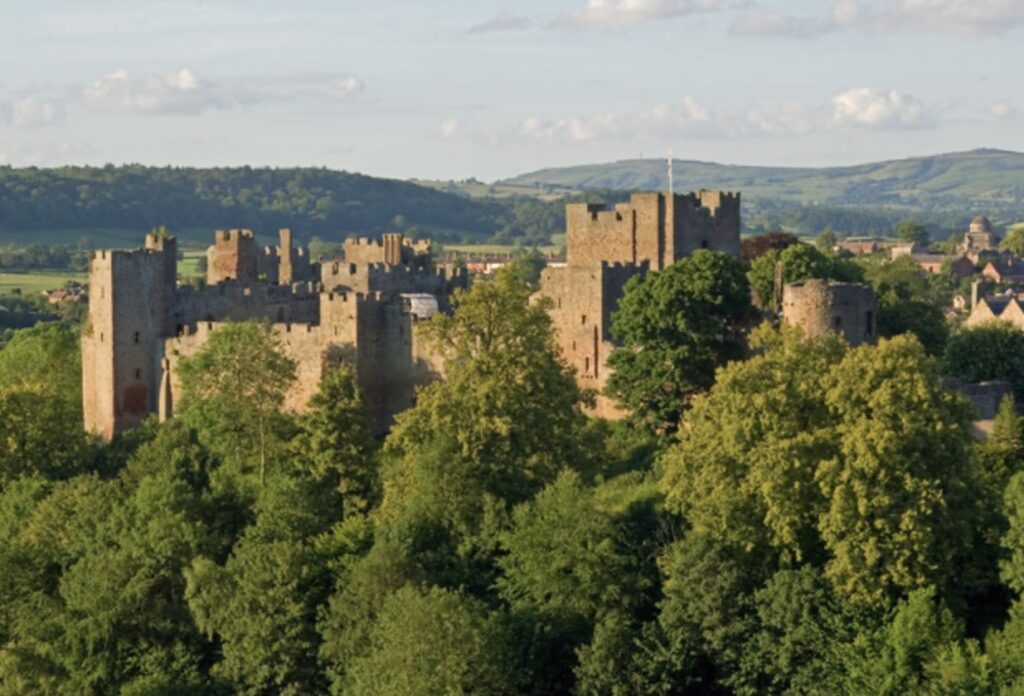
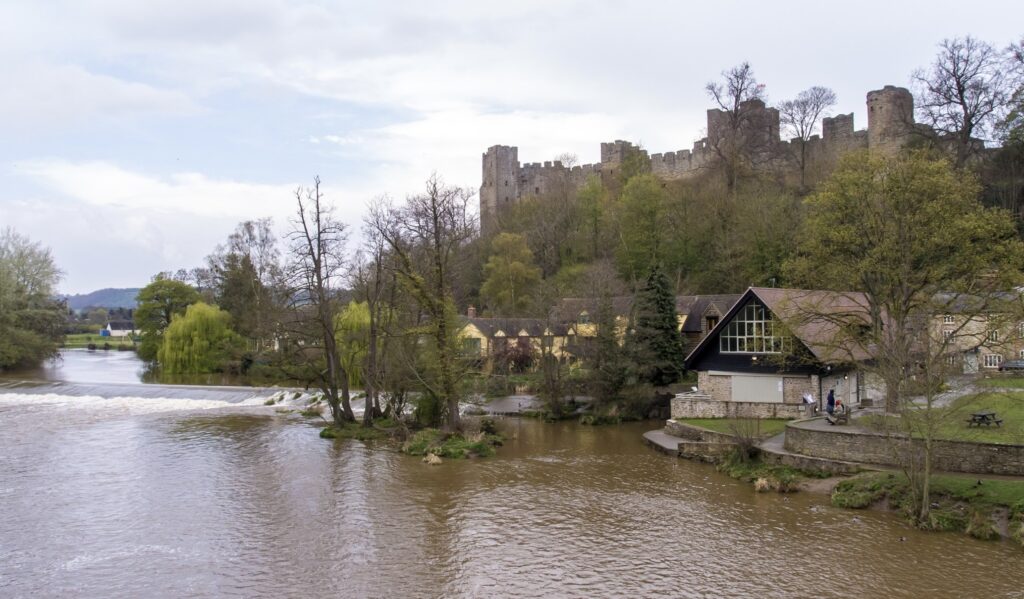
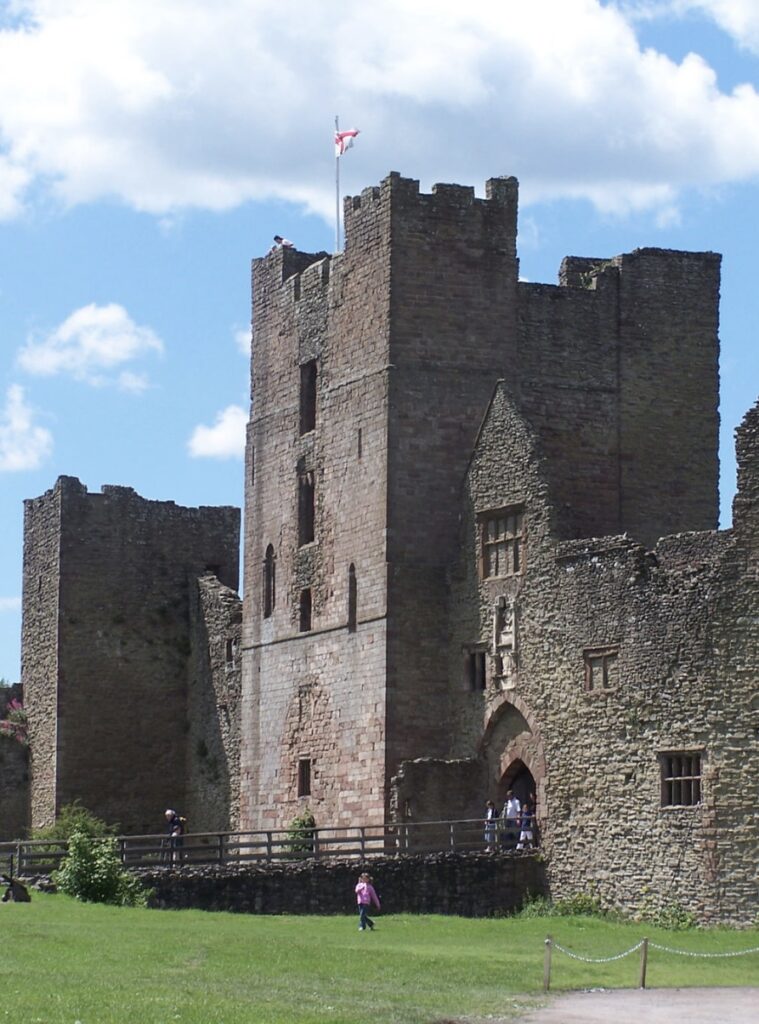
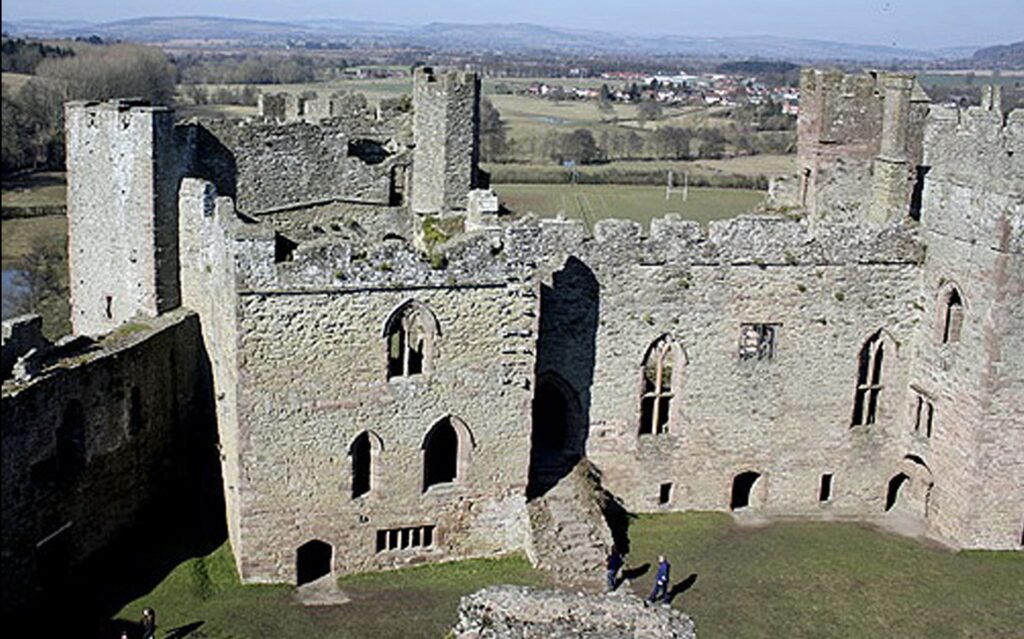
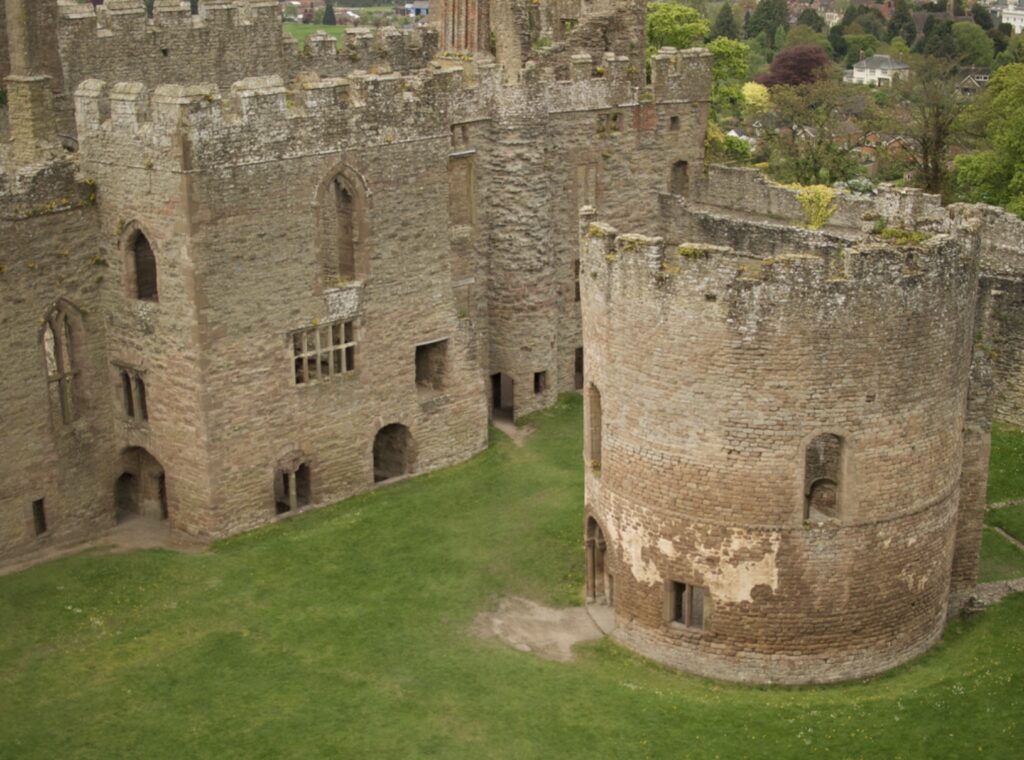
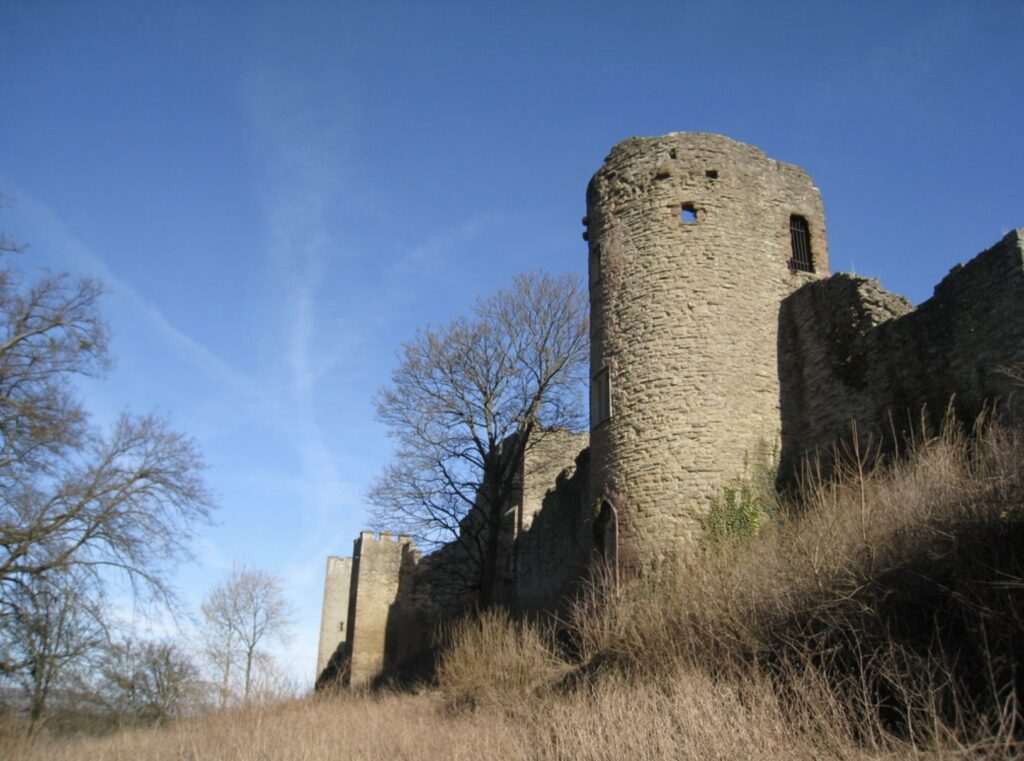
Ludlow is rich in history and offers a variety of historical monuments and tourist attractions. Here’s a list of some key sites:
1. Ludlow Castle
- Description: A Norman castle with over 900 years of history, featuring medieval and Tudor architecture. Visitors can explore the keep, towers, Great Hall, and chapel.
- Attraction: Stunning views, historical exhibits, and seasonal events.
2. St Laurence’s Church
- Description: A large, beautiful parish church dating back to the 12th century, known for its tall, elegant tower, stained glass windows, and intricate carvings.
- Attraction: The church’s interior is richly decorated, with notable features like the misericords, stained glass, and the organ.
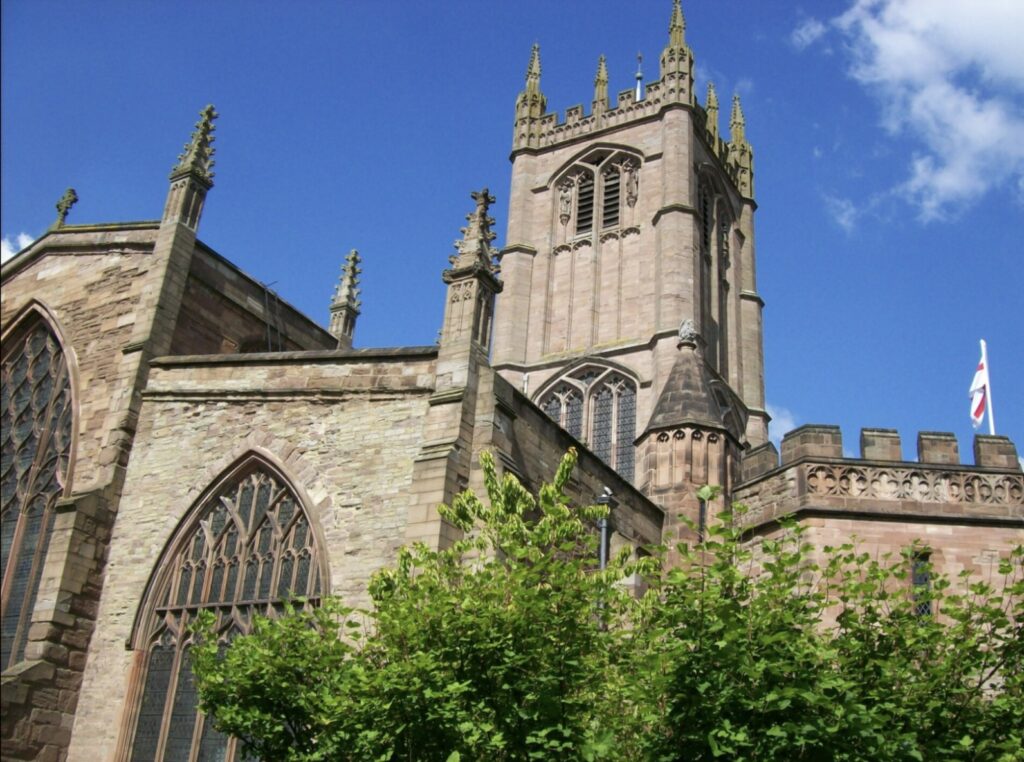
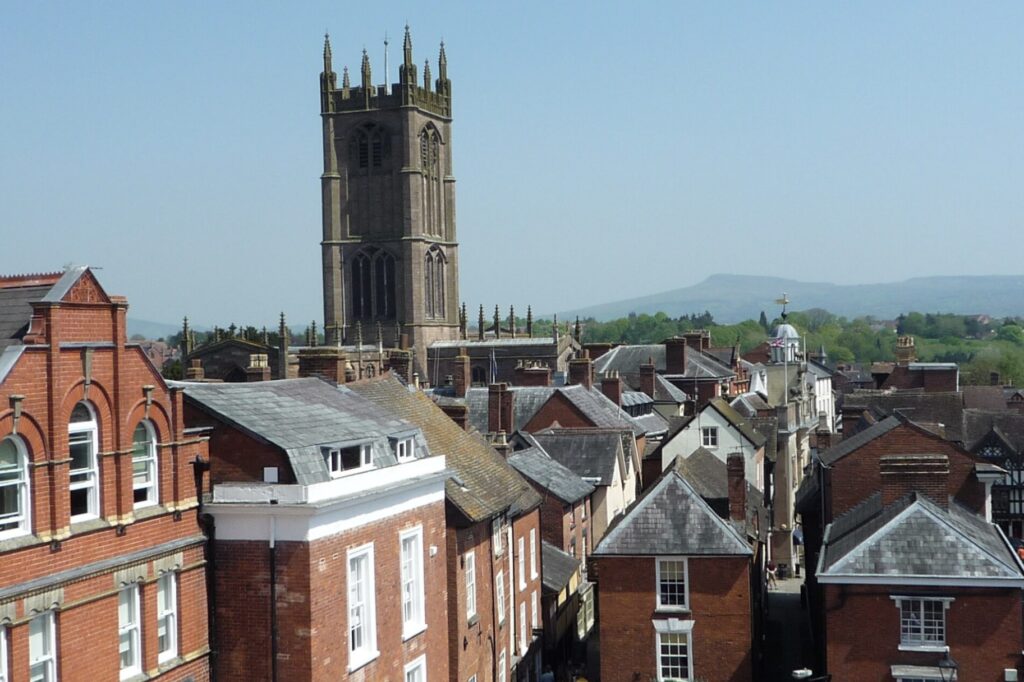
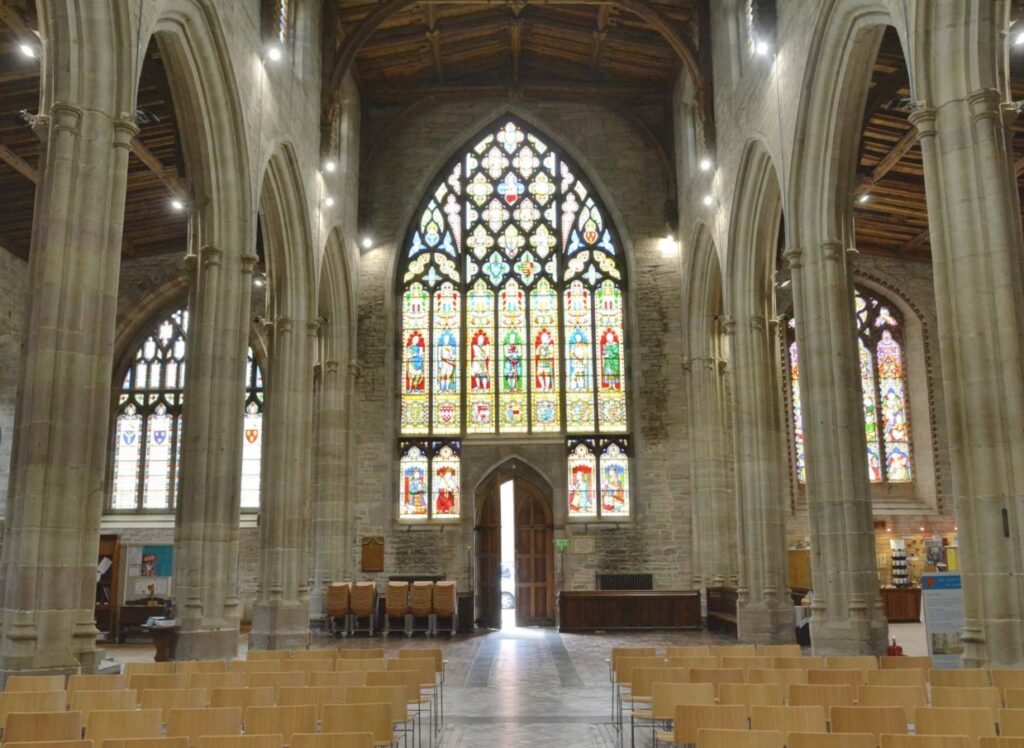
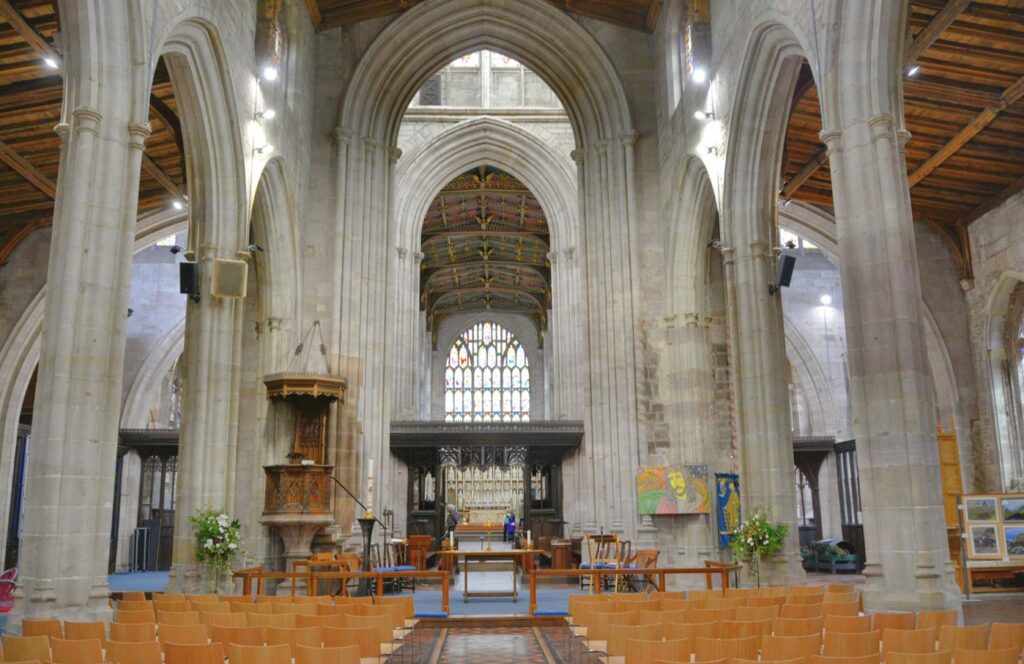
3. Ludlow Market Square
- Description: The heart of the town, the market square is surrounded by historic buildings and hosts a regular market that has been a feature of the town for centuries.
- Attraction: Local produce, crafts, and antiques are available on market days, and the square is also home to various festivals.
4. Feathers Hotel
- Description: A historic coaching inn dating back to the early 17th century, famed for its half-timbered facade and Jacobean architecture.
- Attraction: Known as one of the most photographed inns in England, it offers a glimpse into Ludlow’s rich past.
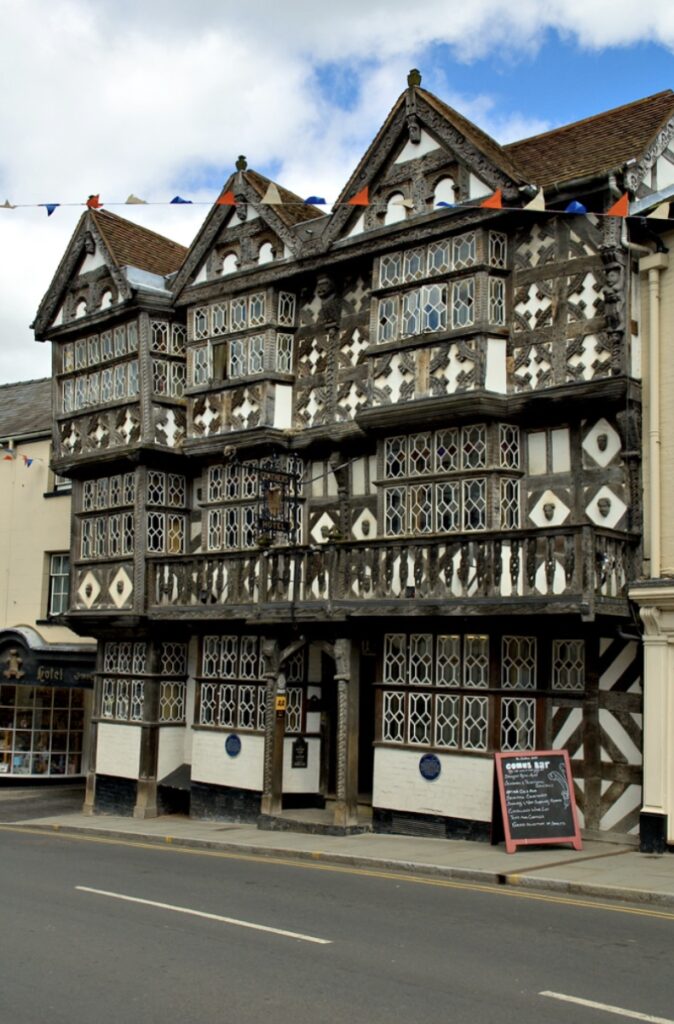
5. Broad Street
- Description: One of the finest preserved streets in Ludlow, lined with medieval, Tudor, and Georgian buildings, including merchant houses and timber-framed shops.
- Attraction: A picturesque area ideal for a leisurely stroll, with shops, galleries, and cafes.
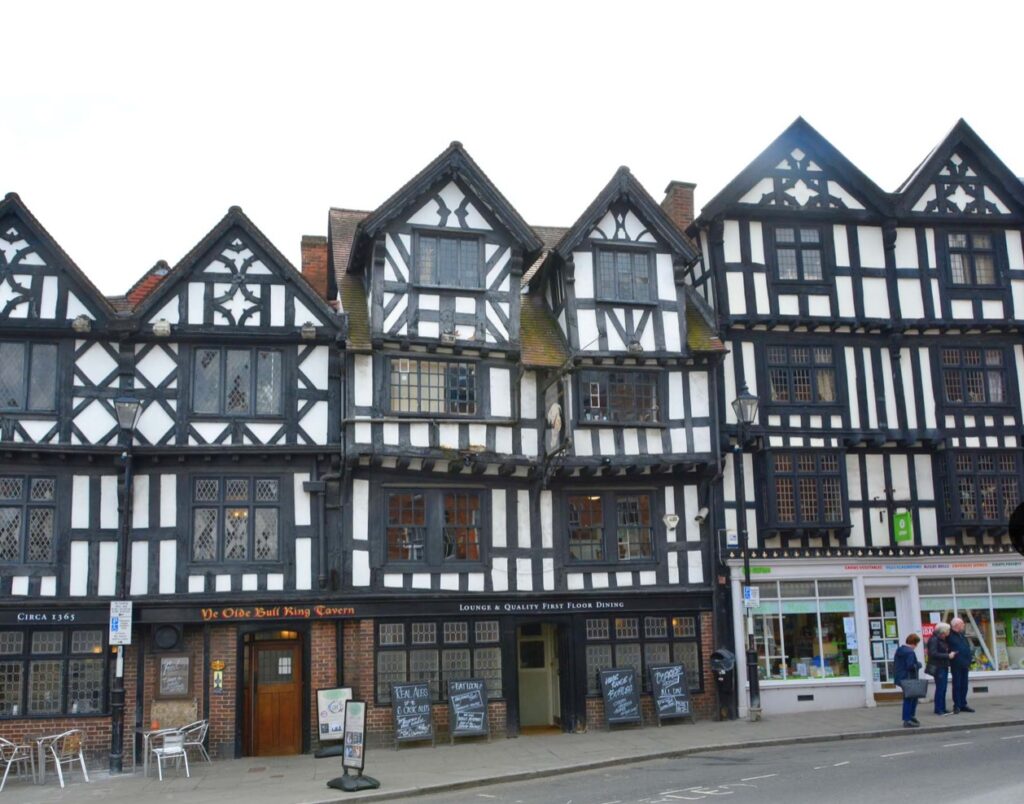
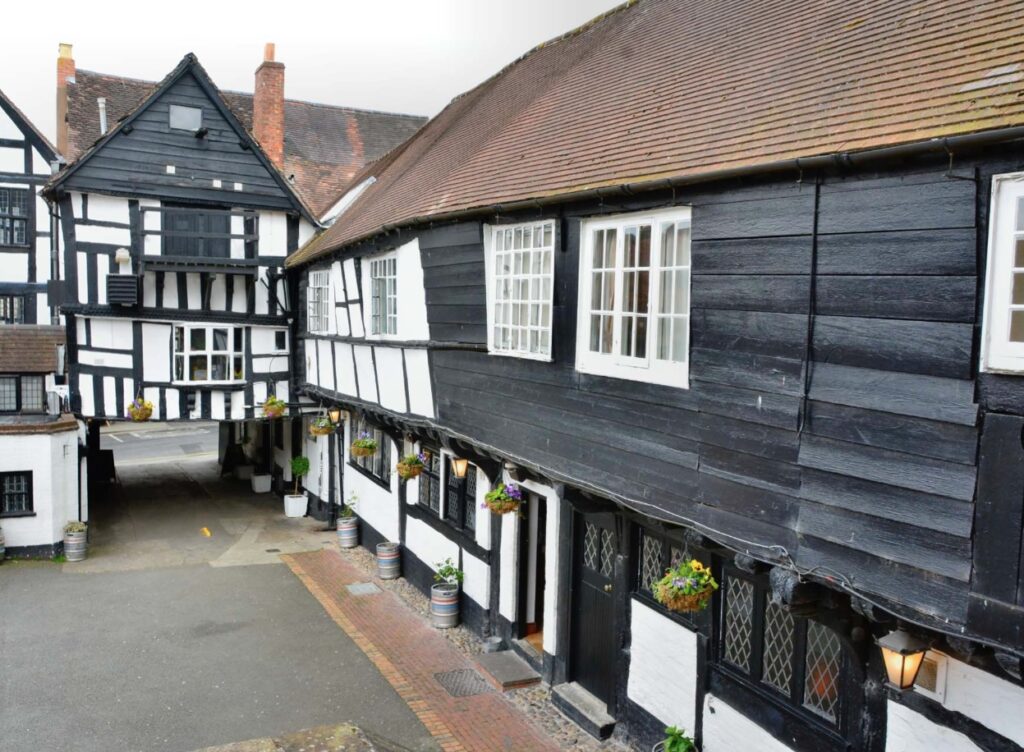
6. Ludlow Museum
- Description: A small but informative museum located in the Buttercross building, offering insights into Ludlow’s history, geology, and archaeology.
- Attraction: Exhibits include fossils, local history displays, and interactive elements.
7. Dinham Bridge
- Description: A picturesque medieval stone bridge spanning the River Teme, offering scenic views of the river and surrounding countryside.
- Attraction: A perfect spot for photography and leisurely walks along the riverside.
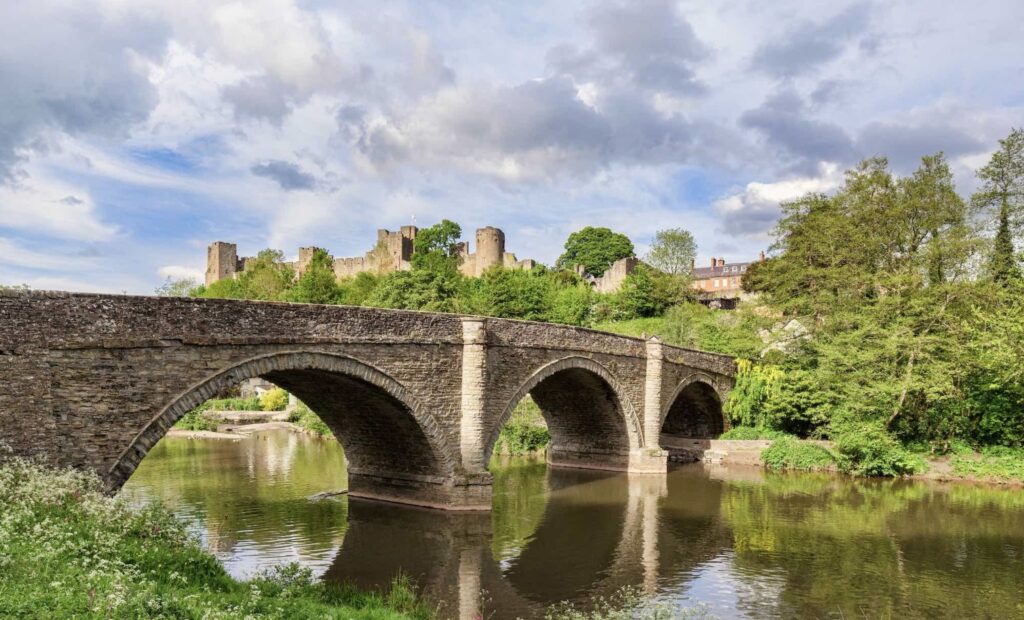
8. Ludlow Food Centre
- Description: While slightly outside the town, the Ludlow Food Centre is a must-visit for food enthusiasts, offering a range of local produce.
- Attraction: Visitors can sample and purchase locally made cheeses, meats, preserves, and other artisanal goods.
9. Whitcliffe Common
- Description: A large area of natural beauty just outside Ludlow, offering walking trails with panoramic views of the town and castle.
- Attraction: Popular for walking, picnicking, and birdwatching, with several viewpoints overlooking Ludlow.
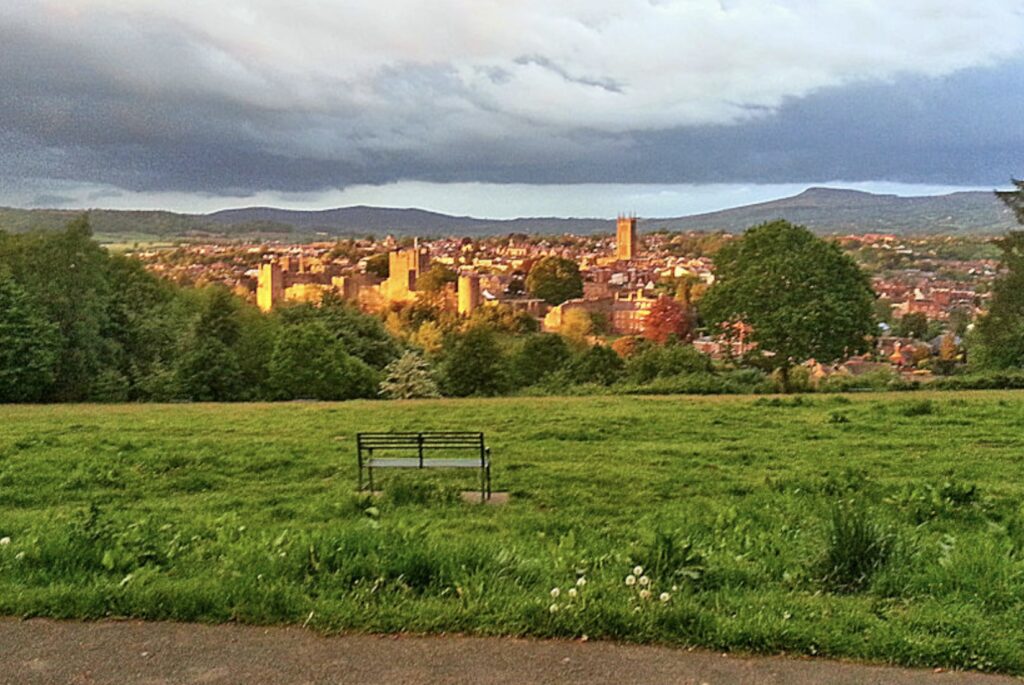
10. Ludlow Brewing Company
- Description: A local brewery housed in a converted Victorian railway shed, offering tours and tastings of their craft beers.
- Attraction: Visitors can learn about the brewing process and sample a range of beers.
11. Mortimer Forest
- Description: A large area of ancient woodland and managed forest near Ludlow, with trails for walking, cycling, and wildlife watching.
- Attraction: A peaceful retreat for nature lovers, with various routes to explore the forest’s diverse habitats.
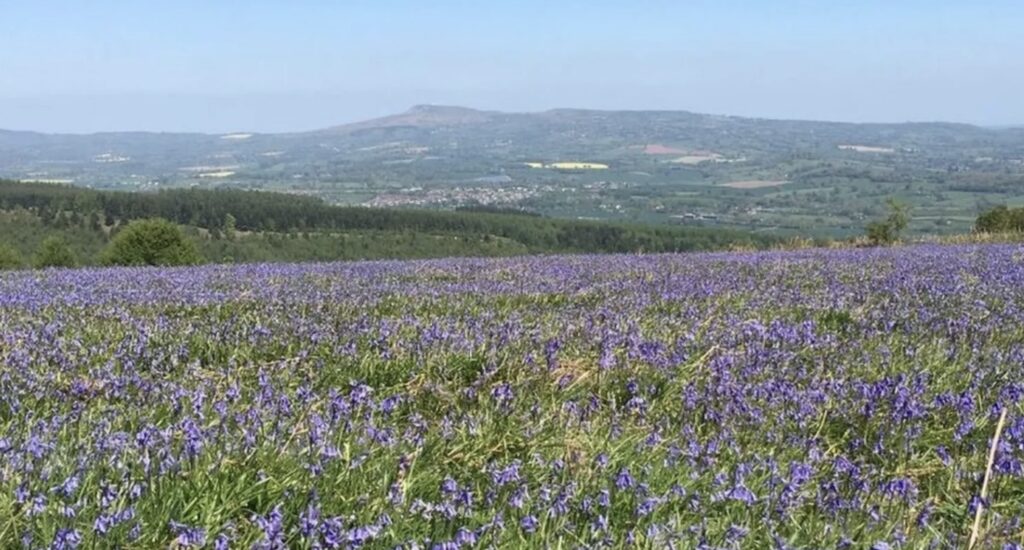
12. The Buttercross
- Description: An 18th-century building that once served as the town hall, now part of the museum.
- Attraction: Offers historical exhibits and a unique view of the town’s administrative past.
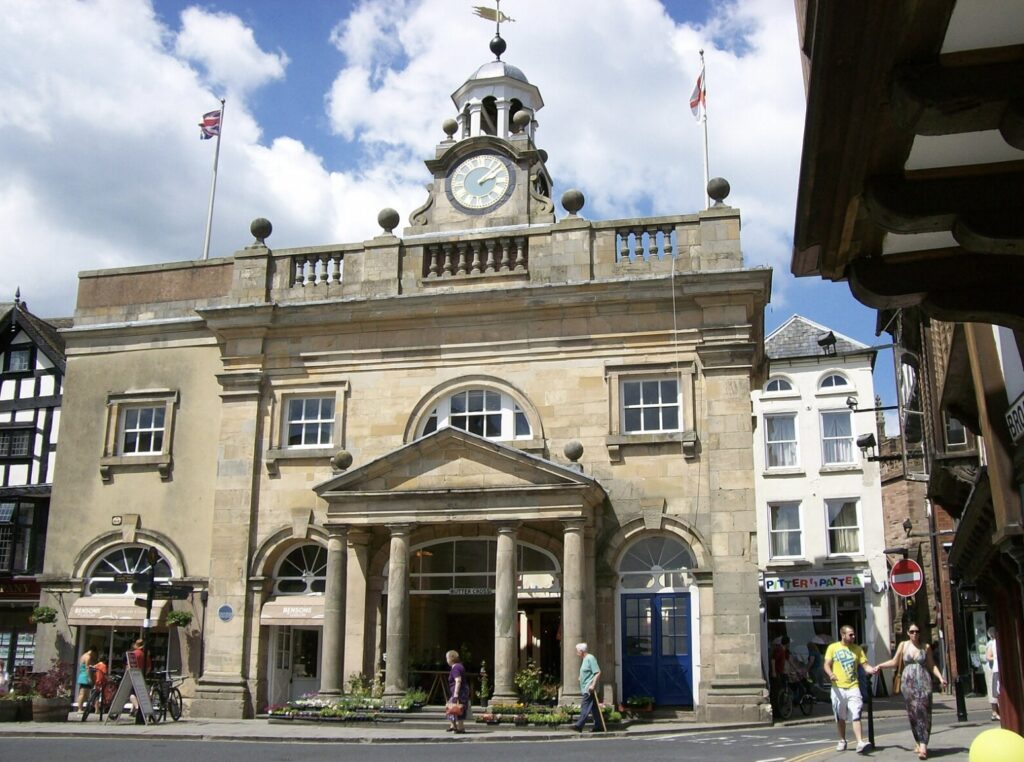
These attractions make Ludlow a charming destination for those interested in history, culture, and natural beauty.
Ludlow is surrounded by beautiful countryside, offering a variety of hiking trails that range from gentle walks to more challenging hikes. Here’s a list of some popular hiking trails around Ludlow:
1. Whitcliffe Common
- Distance: Various trails, up to 5 miles
- Difficulty: Easy to moderate
- Description: This area offers several walking routes with stunning views over Ludlow and the surrounding countryside. The trails meander through woodlands and along the River Teme.
2. Mortimer Forest
- Distance: Various trails, ranging from 2 to 10 miles
- Difficulty: Easy to hard
- Description: A large forest with a network of well-marked trails, offering everything from short woodland walks to longer hikes with panoramic views from High Vinnalls. The forest is rich in wildlife and has routes suited to different fitness levels.
3. Ludlow to Bromfield
- Distance: Approximately 4 miles (one way)
- Difficulty: Easy
- Description: A pleasant riverside walk that follows the River Teme from Ludlow to the village of Bromfield. The path is mostly flat and passes through beautiful rural landscapes, including the grounds of Ludlow Food Centre.
4. The Shropshire Way
- Distance: Variable, as it’s part of a long-distance trail
- Difficulty: Moderate to hard
- Description: The Shropshire Way is a long-distance trail that passes through Ludlow. You can explore sections of the route around Ludlow, such as the stretch towards Craven Arms, which offers views of the Shropshire Hills.
5. Titterstone Clee Hill
- Distance: 2 to 4 miles
- Difficulty: Moderate
- Description: A hike up Titterstone Clee Hill, one of Shropshire’s highest points, offers expansive views over the surrounding countryside. The terrain can be rocky and exposed, but the panoramic vistas from the summit are worth the effort.
6. Stokesay Castle and the Surrounding Area
- Distance: 3 to 5 miles
- Difficulty: Easy to moderate
- Description: A circular walk around Stokesay Castle, a beautifully preserved medieval manor house. The trail takes you through peaceful countryside, offering a mix of history and nature.
7. Vinnalls Loop (Mortimer Forest)
- Distance: 5 miles
- Difficulty: Moderate
- Description: This loop trail in Mortimer Forest takes you up to High Vinnalls, the highest point in the forest, with excellent views across Shropshire and Herefordshire. The trail is well-marked and includes woodland paths and open ridges.
8. Clee Hill Common
- Distance: 2 to 6 miles (depending on the route)
- Difficulty: Moderate
- Description: A walk on Clee Hill Common offers dramatic landscapes, with open moorland, rocky outcrops, and far-reaching views. There are several paths to explore, with the potential to spot wildlife such as birds of prey.
9. River Teme and Dinham Bridge Loop
- Distance: Approximately 2 miles
- Difficulty: Easy
- Description: A short loop walk along the River Teme and across Dinham Bridge, offering scenic views of Ludlow Castle and the river. Ideal for a leisurely stroll close to town.
10. Ludlow to Richards Castle
- Distance: Approximately 6 miles (round trip)
- Difficulty: Moderate
- Description: This trail takes you from Ludlow to the nearby ruins of Richards Castle, an 11th-century Norman fortress. The walk includes sections of woodland and open fields.
These trails offer a variety of experiences, from historical walks to scenic hikes with breathtaking views, making Ludlow a fantastic base for exploring the Shropshire countryside.
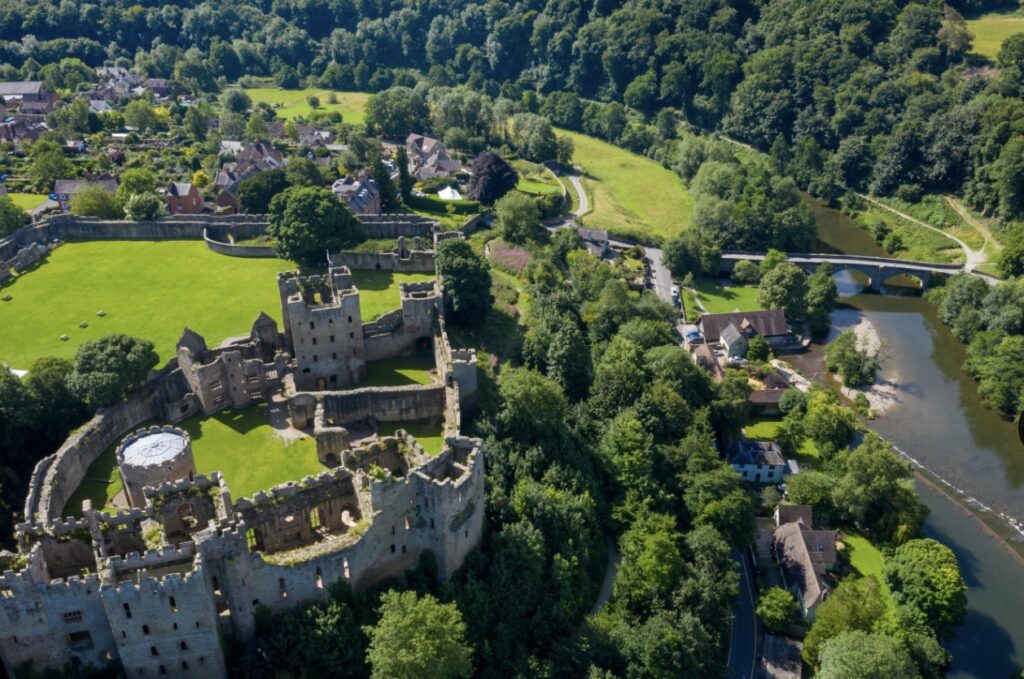
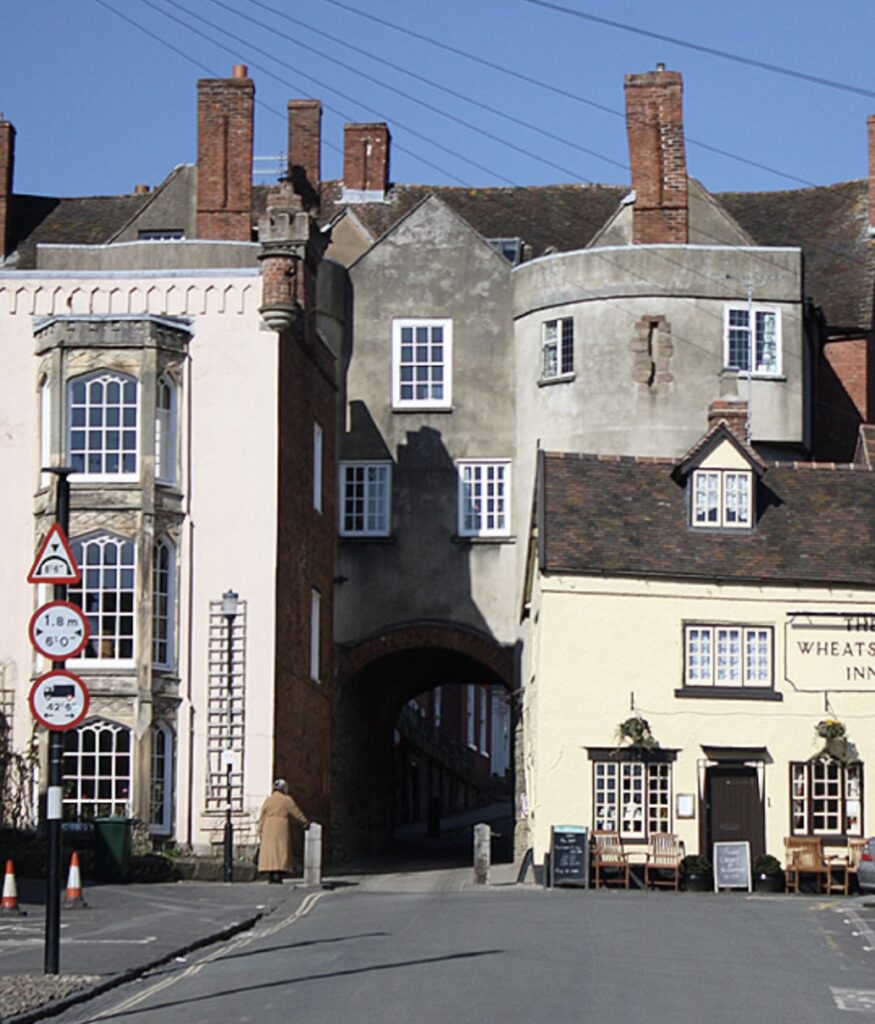
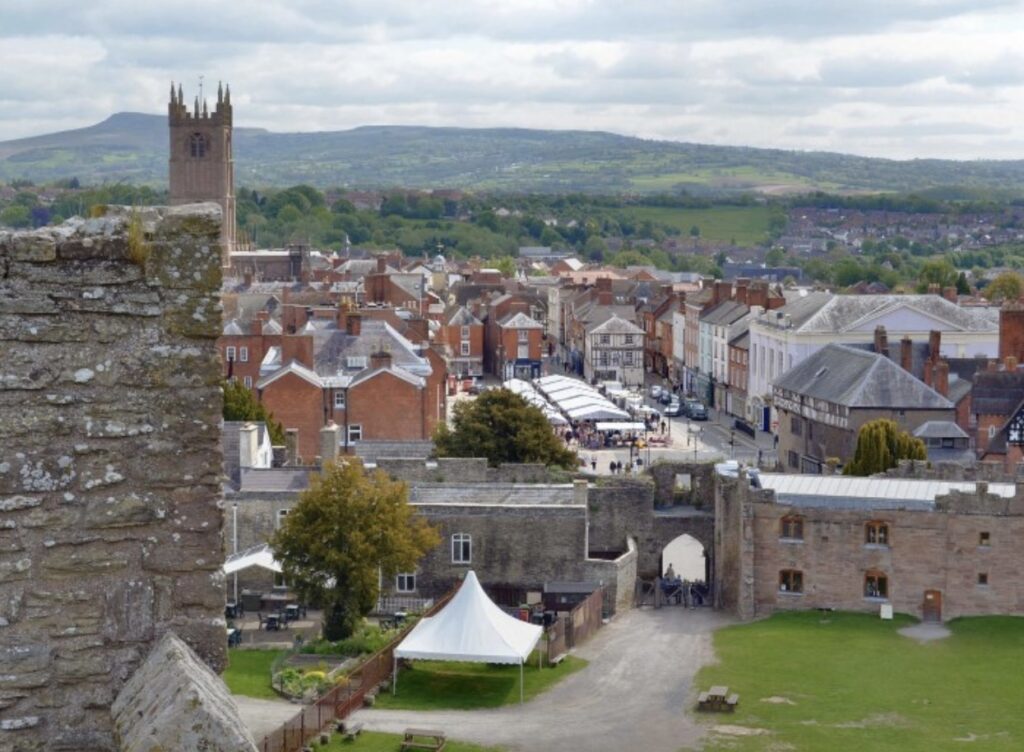
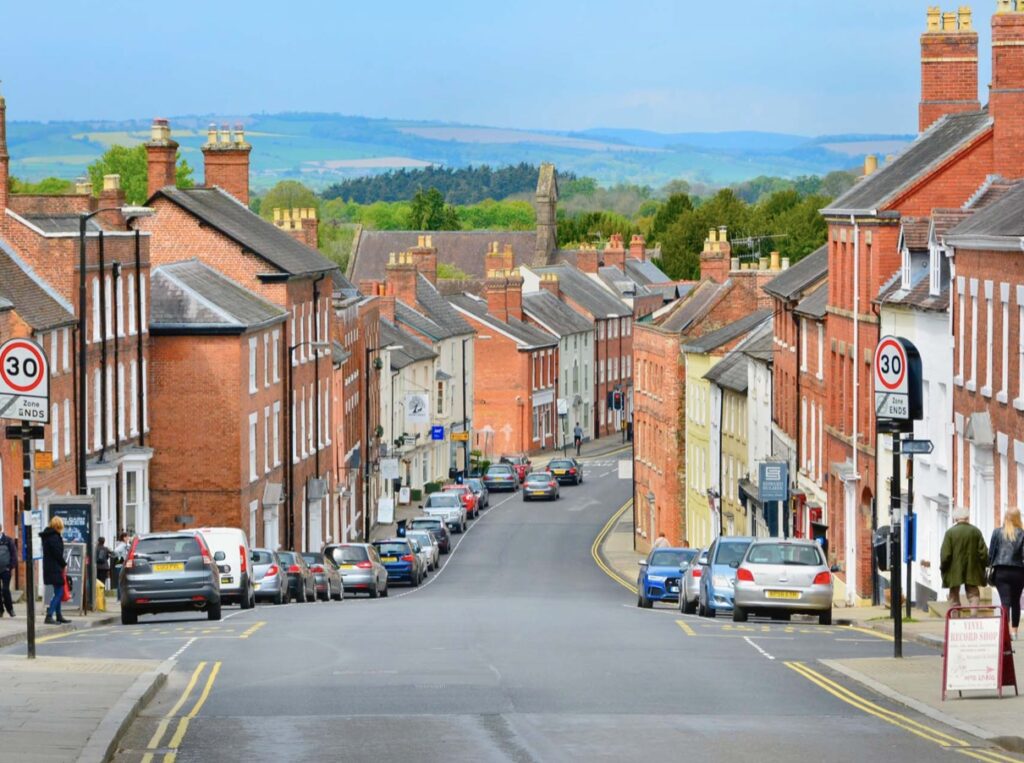
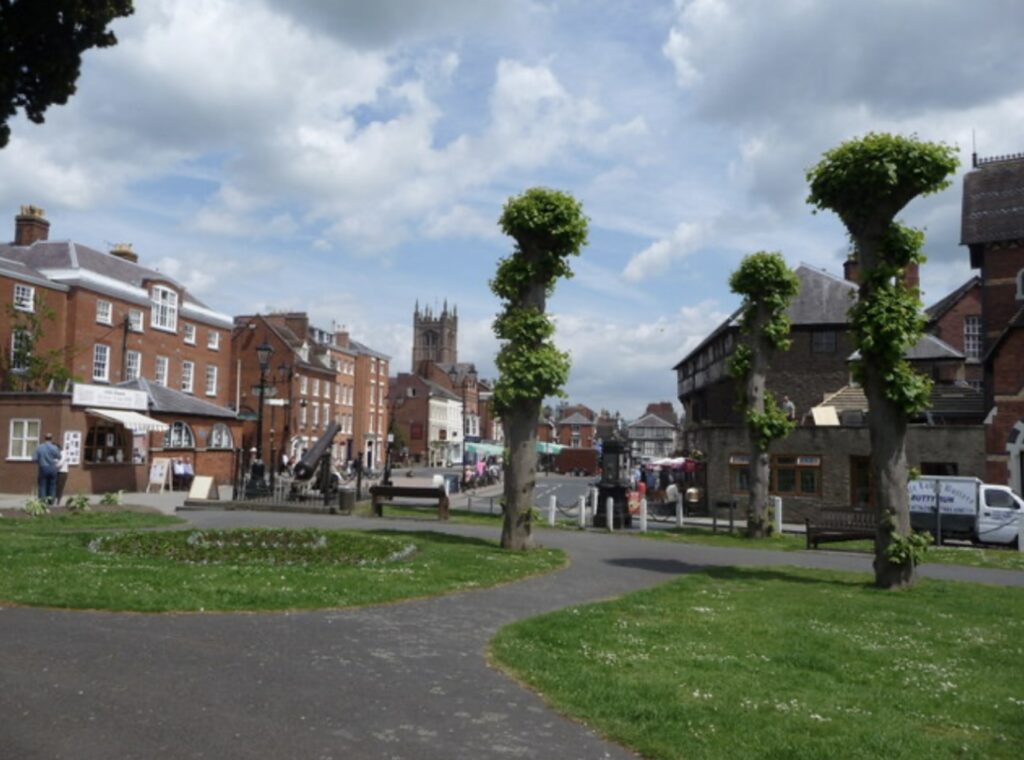
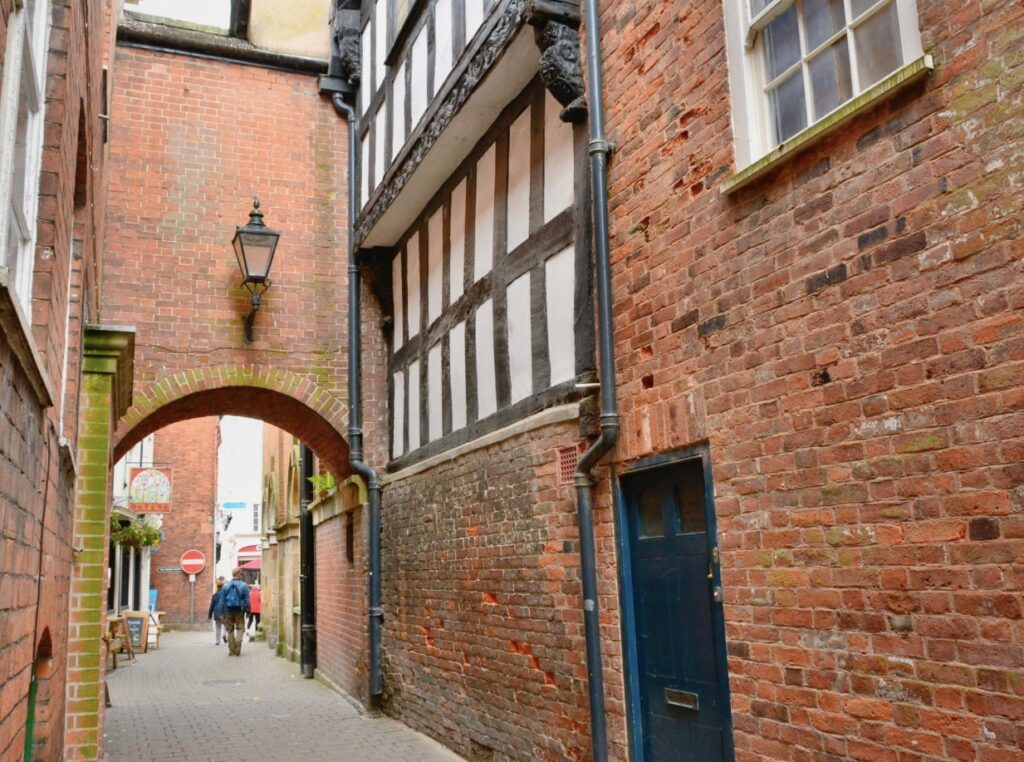
Here’s a one-day itinerary for visiting Ludlow that includes a scenic hike and an opportunity to enjoy the local food scene:
Morning
8:30 AM – Breakfast at The Green Café
- Location: By Dinham Bridge, Ludlow
- Description: Start your day with a hearty breakfast at The Green Café, which offers a lovely riverside setting. Enjoy a selection of locally sourced and freshly prepared dishes, including artisanal bread, eggs, and local sausages.
9:30 AM – Explore Ludlow Castle
- Location: Castle Square, Ludlow
- Description: After breakfast, head to Ludlow Castle, one of the finest medieval ruins in England. Spend about an hour exploring the castle grounds, towers, and the stunning views of the surrounding area.
Late Morning
11:00 AM – Hike in Mortimer Forest
- Trail: Vinnalls Loop
- Distance: 5 miles (approx. 2-3 hours)
- Difficulty: Moderate
- Description: Drive or walk to Mortimer Forest, just a short distance from Ludlow. Begin your hike on the Vinnalls Loop, which takes you through diverse woodlands and up to High Vinnalls, the highest point in the forest. Enjoy panoramic views across Shropshire and Herefordshire. This hike is perfect for nature lovers and offers a moderate challenge.
Afternoon
1:30 PM – Lunch at The Ludlow Food Centre
- Location: Bromfield, a short drive from Ludlow
- Description: After your hike, drive to The Ludlow Food Centre for lunch. The café here serves delicious dishes made from fresh, locally sourced ingredients, including meats, cheeses, and vegetables from the surrounding farms. It’s a great place to experience the region’s culinary heritage.
2:30 PM – Explore The Ludlow Food Centre
- Description: After lunch, take some time to explore the Food Centre itself. You can browse and purchase local specialties, including cheeses, meats, baked goods, and preserves. It’s a great opportunity to bring home some of Ludlow’s famous produce.
Late Afternoon
3:30 PM – Stroll Around Ludlow Market Square
- Location: Ludlow Town Centre
- Description: Return to Ludlow and spend the afternoon exploring the Market Square and surrounding streets. If it’s a market day, browse the stalls for local crafts, food, and antiques. The square is also home to some of Ludlow’s historic buildings and offers plenty of opportunities for photography.
4:30 PM – Visit St Laurence’s Church
- Location: Ludlow Town Centre
- Description: Finish your day with a visit to St Laurence’s Church, a stunning example of medieval architecture. The church is renowned for its beautiful stained glass windows and intricate carvings.
Early Evening
5:30 PM – Early Dinner at The Church Inn
- Location: Church Street, Ludlow
- Description: Enjoy an early dinner at The Church Inn, a traditional pub near St Laurence’s Church. The pub offers a cozy atmosphere and serves a range of classic British dishes, including locally sourced meats and seasonal vegetables.
7:00 PM – Evening Stroll Along the River Teme
- Description: After dinner, take a relaxing stroll along the River Teme, crossing Dinham Bridge. The evening light offers beautiful views of the river and the surrounding countryside, providing a peaceful end to your day.
This itinerary allows you to experience the best of Ludlow’s natural beauty, historical sites, and culinary delights, all in a single day.
